
views
Preparing Your Drywall
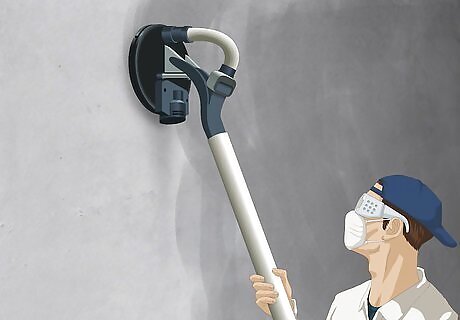
Sand your drywall. Use a sanding pole to prepare your walls for drywall texturing. A pole with a rounded sander will allow you to remove material faster. Try to get the wall as smooth as possible. Use a sanding sponge to sand any difficult angles or corners. You can also use the sanding sponge for detail work. Use a fine grit sandpaper to sand your drywall. Sand with light pressure to avoid ruining the texture of the wall. Wear protective goggles and a dust mask when sanding. Sanding drywall releases small particles of drywall dust that will get everywhere. Make sure you're protected.

Prime your drywall. Remove any dust remaining from the sanding process with a damp cloth. Use a brush to prime the edges near the ceiling line, and use a roller to coat the walls. A high quality primer should go on in a single coat. Before priming, lay down some protective covering such as plastic or heavy cloth. Cover any valuables that can't be moved from the room. Primer's main function is to stick to a surface, making it difficult to remove. Some professionals recommend priming the drywall before you texture to help the compound stick. Others recommend priming after you texture to give your pattern a nice finish. The choice is yours.
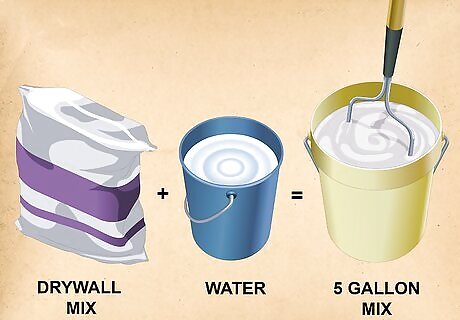
Mix your drywall compound. Fill a clean five gallon bucket with about five parts powdered drywall mix and thirty parts water. The compound should look like thin batter. If you're using a premixed compound gradually add water until you find the right consistency. Write down the ratios you used so you can make keep the compound consistent in case you run out. A drill with a ribbon mixer attachment makes this job considerably easier. You can also let the compound sit overnight to dissolve any lumps. Be sure to mix it again before texturing your wall.
Creating an Orange Peel Texture
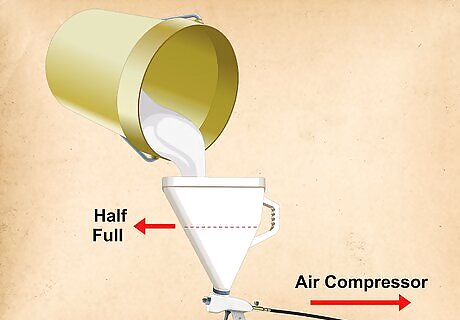
Rent or buy a hopper gun and air compressor. You can find hopper guns at most hardware stores, or online. If you plan on doing a lot of drywall texturing, you may find it more cost effective to purchase one of your own. If this is a one-time project, consider renting your hopper gun. Attach the hopper gun to an air compressor and load the hopper with your mixed drywall compound. Read the manufacturer's instructions before operating the hopper gun. Only fill the hopper up about halfway to keep it from getting too heavy.
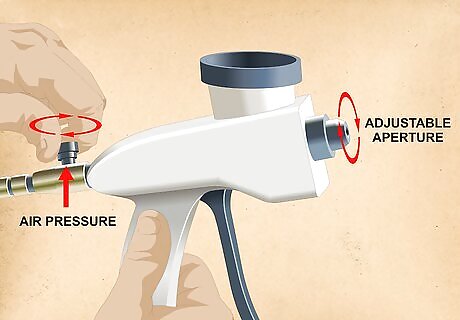
Adjust the air pressure. The air pressure needs to be high enough to spray the compound from the gun, but not so high that you can't control the spray. The gun should also have an adjustable aperture, or mouth. Adjust this opening to your liking. A wider opening will create bigger blobs, and a smaller one will create a finer texture.
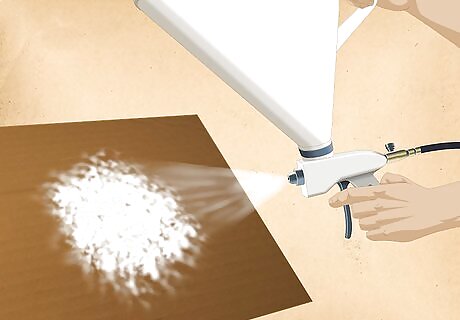
Practice your technique. Before you spray your entire room, do a few test sprays on some scrap cardboard or drywall. Make any final adjustments to the pressure and aperture. Write down the settings you used in case you want to make the same effect again.
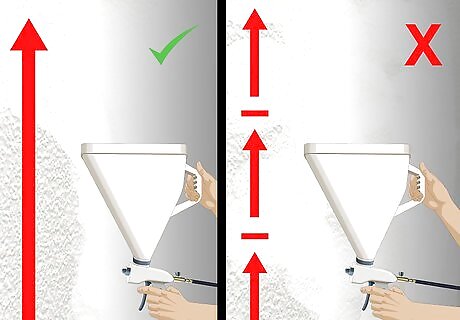
Spray your drywall. Cover your wall in a continuous, sweeping motion. Don't pause when spraying as this will cause build up on your wall. Spray with a light touch for best results. You can spray in vertical or horizontal lines, or even in a random pattern. How you decide to spray is up to you, just keep in mind you're aiming for a uniform application. If you feel some of the texture is too thin, you can make another pass. However, be careful not to spray too much. It can be difficult to match up the textures when doing touch-ups.
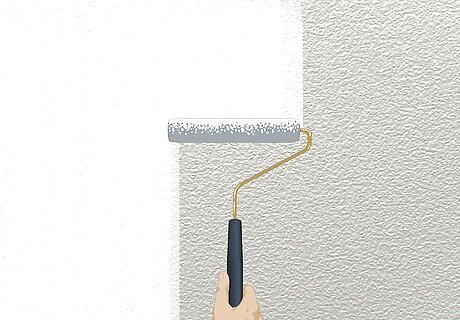
Finish the texture. Your texture isn't complete until you paint it. Before you paint your drywall, add another coat of primer. Once the primer dries, add one or two coats of paint to finish the job. Let the drywall texture dry completely before painting.
Creating a Sand Swirl Texture

Gather your supplies. All you need to do a sand swirl drywall texture is a wide brush, about 7 inches (17.8 cm) long. You can replace the drywall compound with a mixture known as perlite, which is primer with sand mixed in. The fine grit of the sand adds another dimension to this texture. If you choose to do swirls with just the drywall compound, you may need to thin it out a little more to get even swirls.
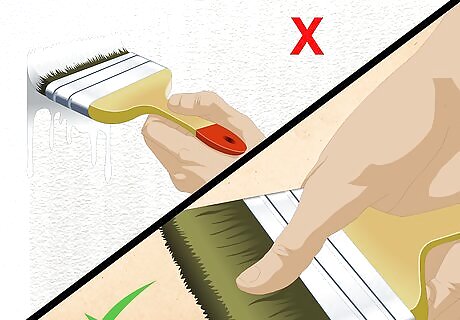
Load the brush. To get the right effect from this texture, load the brush and wipe away any excess compound. You don't want your brush to have so much compound that it drips on your wall. Don't hold the brush by the handle. Grip the brush so that your hand is actually touching the bristles. This will give you better control when making the swirl pattern.

Start your pattern near the ceiling. Start at one end of the wall and work your way over in a horizontal line. Place your brush several inches below the ceiling and make a half-moon shape. When you start the next swirl, place your brush on the spot where your half-moon ended. This will create a nice overlapping effect. Work your way down the wall. The top of each swirl should cover the bottom of the row above it, so that all the swirls overlap. Practice your technique on some scrap cardboard or drywall before attempting the texture on your wall.
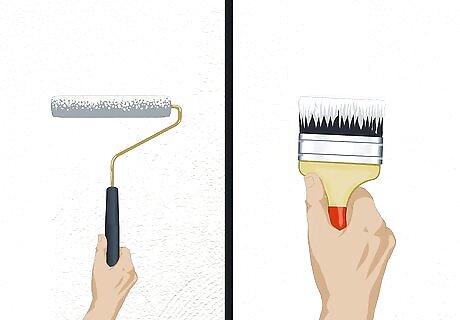
Finish the texture. Once the compound or perlite has dried, add another coat of primer. Let the primer dry and then paint the room as normal.
Creating a Slap Brush Texture
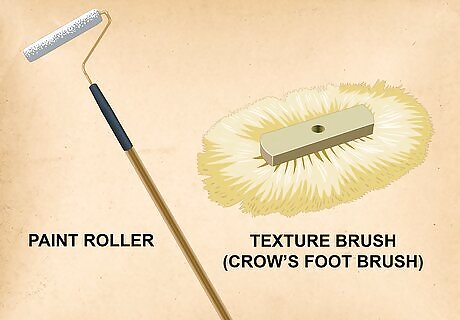
Gather your supplies. To create the slap brush texture you will need a paint roller and some texture brushes. If you plan on doing the ceiling as well, get a pole for your roller and brushes. You can find these at any hardware store. The texture brushes may be marketed as "crow's foot" brushes.
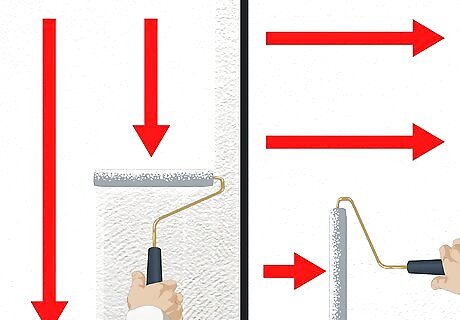
Roll out your compound. Load your paint roller up with drywall compound and start rolling in vertical lines. When you finish rolling one direction, repeat the process in the opposite direction. You aren't adding more mud to the wall, rather your goal is to make an even surface. After you've rolled in the opposite direction, make another pass with horizontal lines. Crossing directions helps to smooth out any lines from rolling. Work with a 1/2 inch to 3/4 inch (1.25 to 2 cm) roller for best results. As you pull the roller out, give it a slight shake to remove any excess mud. As you apply the compound, you want to avoid dripping compound down your walls. If you have a hopper gun, you can choose to spray the compound on the wall rather than roll it. Either way, try to keep the layer even.

Load up your texture brush. Apply a generous amount of drywall compound to your texture brush. Hold the brush perpendicular to the wall and "stamp" the brush onto the wall. Pull the brush off the wall and keep stamping the wall, working in sections. To vary the pattern, make half turns with the brush with every stamp. Don't turn the brush while it is touching the wall, as that will make a smoother, swirled pattern. The goal of the slap brush technique is a rough texture.
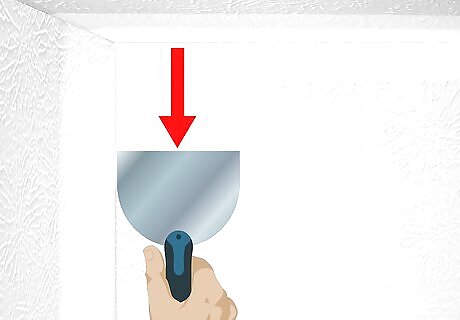
Wipe the angles. Dip a taping knife into some of the drywall compound and run it across the edges to smooth out any angles. Wipe the corners from the inside out. Put the edge of the brush into the corner and pull away from the angle.
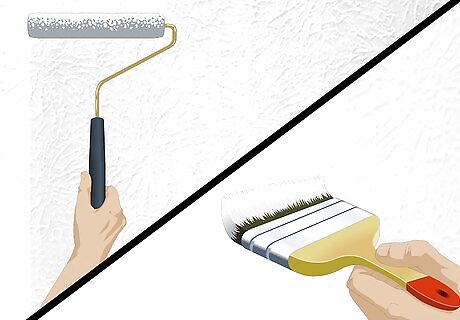
Finish the texture. Let the drywall compound dry completely before adding another coat of primer. Once the primer has dried, paint the room as normal.










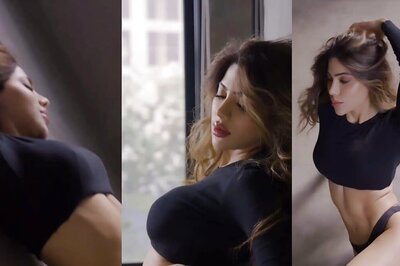
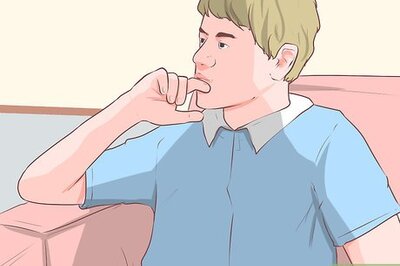


Comments
0 comment